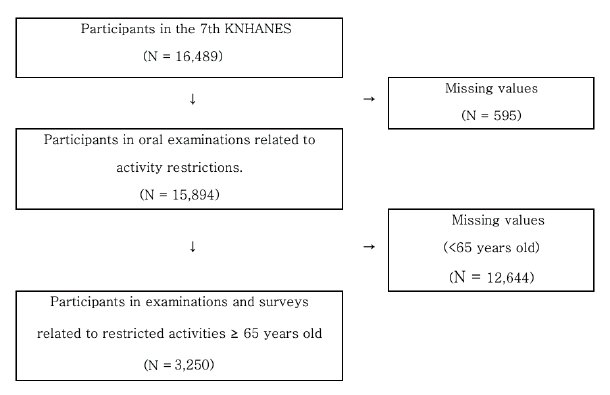Abstract
The purpose of this study was to investigate the degree of activity restriction and the number of remaining teeth of the elderly and to analyze the correlation. Statistical analysis of the collected data was analyzed using the SPSS window program 25.0 version (IBM) using a composite sample for the analysis of the 7th National Health and Nutrition Survey data, and a composite sample multiple logistic regression analysis was performed to confirm the effect of activity restrictions on the number of remaining teeth. As a result of analyzing the effect of activity restriction on the number of remaining teeth, in the model that analyzed only activity restriction variables, the risk ratio of less than 20 remaining teeth was 1.61 times higher and the age-adjusted model, the risk ratio of less than 20 remaining teeth was 1.46 times higher (
Figures & Tables

Fig. 1. Flow chart for sampling study subjects(%)


